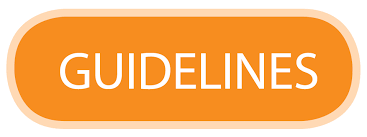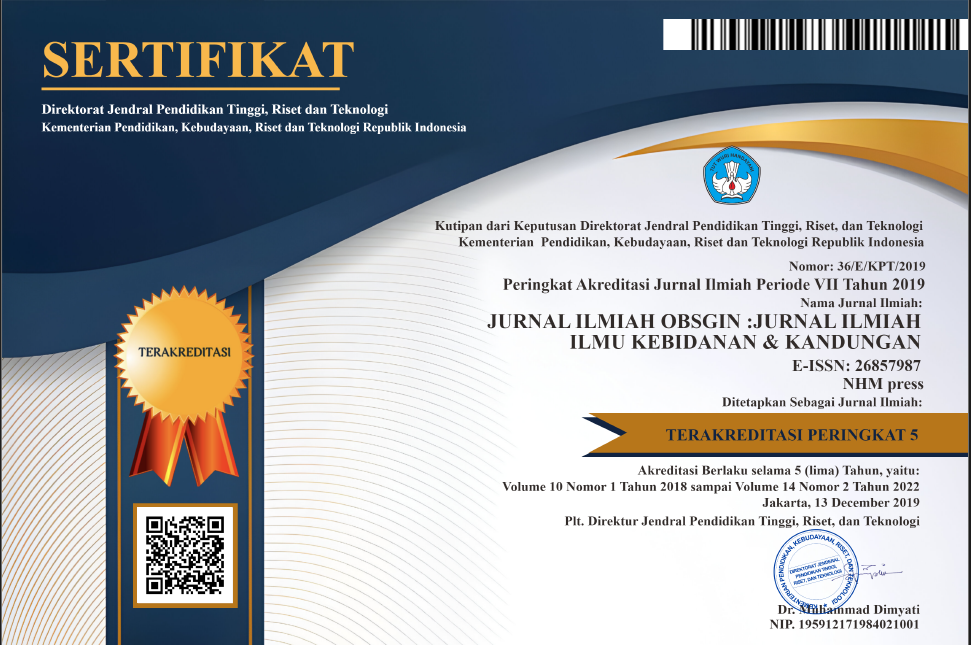EFEKTIFITAS EKSTRA MAJENIKU TERHADAP DISMENORE PADA REMAJA PUTRI DI KELURAHAN BELIAN BATAM KOTA
Abstract
Adolescent and adults who are childbearing age frequently complain of primary or secondary dysmenorrhea. Pelvic pain is most commonly caused by dysmenorrhea. Sharp, sporadic, and spasmodic pain can be categorized as mild, moderate, or severe, depending on how much it interferes with daily tasks or prevents them altogether. Pain lasts for one to three days and starts a few hours before or with the commencement of menstruation. Pharmacological treatments for dysmenorrhea include non-steroidal prostaglandin medications, hormone therapy, and analgesic medications. Nowadays, hormone therapy, NSAIDs, lifestyle modifications, and complementary and alternative medicine are the core treatments for dysmenorrhea. Stretching and aerobic exercise are examples of lifestyle modifications, and peppermint is one of the complementary alternative therapies. The purpose of this study is to determine Majeniku Extra's efficacy in treating dysmenorrhea in young women residing in Belian Village, Batam City. One Group Design Pretest-Posttest experimental design with the Quasi Experiment method is employed in this quantitative study. The purpose of this study is to evaluate aromatherapy's impact. The Wilcoxon test results, which compared the prevalence of dysmenorrhea in adolescents between the pre- and post-test periods, revealed a decrease in the condition with an average score of 13. P value < 0.05 indicated that there was a difference between the two periods. Additionally, the Z min value was found, indicating that teens' dysmenorrhea may be lessened by consuming Majeniku for longer periods of time and more frequently.
References
Agustin, Y., Afrina, R., & Rukiah, N. (2022). Giving Warm Compresses with Progressive Muscle Relaxation Techniques Can Reduce Pain Intensity in Dysmenorrhea. 3, 99–105.
Chen, C. X., Rogers, S. K., Li, R., Hinrichs, R. J., Fortenberry, J. D., & Carpenter, J. S. (2024). Social Determinants of Health and Dysmenorrhea: A Systematic Review. The Journal of Pain, 104574. https://doi.org/https://doi.org/10.1016/j.jpain.2024.104574
Dharmapuri, S. (2019). Dysmenorrhea in adolescents. Pediatric Medicine, 2(34), 1–9. https://doi.org/10.21037/pm.2019.06.09
Gerancher, K. R. (2018). Acog committee opinion. 132(760), 249–258.
Halitopo, Y. (2022). The relationship of the dysmenorrhea a in students with learning activities. 10(5).
Jaleel, G., Shaphe, M. A., Khan, A. R., Malhotra, D., Khan, H., Parveen, S., Qasheesh, M., Beg, R. A., Chahal, A., Ahmad, F., & Ahmad, M. F. (2022). Effect of Exercises on Central and Endocrine System for Pain Modulation in Primary Dysmenorrhea. Journal of Lifestyle Medicine, 12(1), 15–25. https://doi.org/10.15280/jlm.2022.12.1.15
Lopresti, A. L. (2022). Potential Role of Curcumin for the Treatment of Major Depressive Disorder. CNS Drugs, 36(2), 123–141. https://doi.org/10.1007/s40263-022-00901-9
Pinzon, R. T., Lima, R. De, & Sanyasi, R. (2018). Review Article Curcuma longa for Arthritis pain : Systematic review of randomized controlled trial study. 4(5), 528–534.
Sali, A., & Risal, M. (2021). The Effect of Drinking Turmeric Stew Towards Reducing Dysmenorrheal Pain Scale on Students of Senior High School 1 of East Pamona , Poso Regency. 9(2), 106–117.
Siniša, F. (2019). Menstrual pain. Journal of Gynecological Research and Obstetrics, 5, 31–33. https://doi.org/10.17352/jgro.000067
Vijayasri, R., Preetha, S., Abitha, P., Anushya, D., & Bhuvaneshwari, V. (2023). Dysmenorrhea Decoded : Unveiling The Mysteries of Painful Periods. 26(2), 1–4. https://doi.org/10.19080/JGWH.2023.25.556183.











